Related Research Articles
The Woman's Christian Temperance Union (WCTU) is an international temperance organization. It was among the first organizations of women devoted to social reform with a program that "linked the religious and the secular through concerted and far-reaching reform strategies based on applied Christianity." It plays an influential role in the temperance movement. Originating among women in the United States Prohibition movement, the organization supported the 18th Amendment and was also influential in social reform issues that came to prominence in the progressive era.

Frances Elizabeth Caroline Willard was an American educator, temperance reformer, and women's suffragist. Willard became the national president of Woman's Christian Temperance Union (WCTU) in 1879 and remained president until her death in 1898. Her influence continued in the next decades, as the Eighteenth and Nineteenth Amendments to the United States Constitution were adopted. Willard developed the slogan "Do Everything" for the WCTU and encouraged members to engage in a broad array of social reforms by lobbying, petitioning, preaching, publishing, and education. During her lifetime, Willard succeeded in raising the age of consent in many states as well as passing labor reforms including the eight-hour work day. Her vision also encompassed prison reform, scientific temperance instruction, Christian socialism, and the global expansion of women's rights.
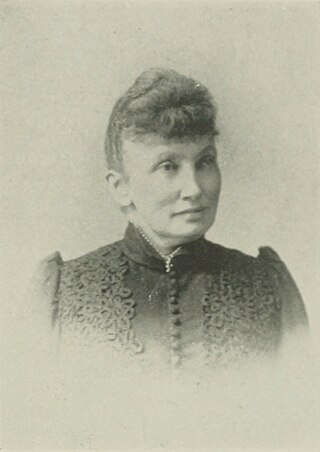
Matilda B. Carse was an Irish-born American businesswoman, social reformer, publisher, and leader of the temperance movement. With Frances E. Willard and Lady Henry Somerset, Carse helped to found the Woman's Christian Temperance Union (WCTU).
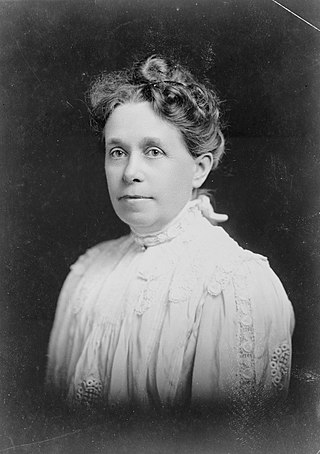
Anna Adams Gordon (1853–1931) was an American social reformer, songwriter, and, as national president of the Woman's Christian Temperance Union when the Eighteenth Amendment was adopted, a major figure in the Temperance movement.

Mary Greenleaf Leavitt was an educator and successful orator who became the first round-the-world missionary for the Woman's Christian Temperance Union (WCTU). Setting out on virtually non-stop worldwide tours over a decade, she "went to all continents save Antarctica," where she crusaded against alcohol and its evils including domestic violence; and advocated for women's suffrage and other equal rights such as higher education for women. In 1891 she became the honorary life president of the World's WCTU.
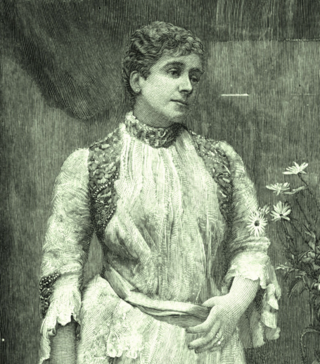
Julia A. Ames was an American journalist, editor and temperance reformer. She served as associate editor of the Woman's Temperance Publishing Association's Union Signal. Ames died in 1891 at the age of 30. The year after her death, the journalist and spiritualist W. T. Stead published automatic writing which was said to have been sent by Ames to her friend. Stead also created "Julie's Bureau" to allow others to communicate with the dead.
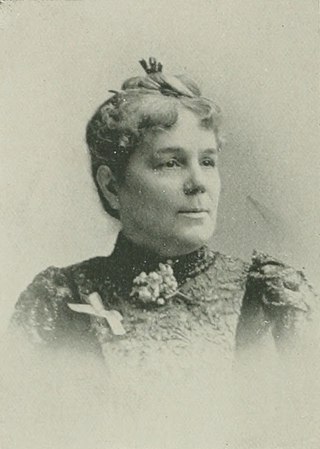
Mary Towne Burt was a 19th-century American temperance reformer, newspaper publisher, and benefactor from Ohio. Burt was identified with temperance work nearly all her life. She was the first president of the Auburn, New York branch of the Women's Christian Temperance Union, and beginning in 1882, served as president of the New York State Society of the Union. In 1875, she became the publisher, and subsequently the editor, of Our Union, the organ of the society, and in 1878–80 was the corresponding secretary of the National Union. For several years, Burt had charge of the legislative interests of the union, and several laws for the protection of women and young girls resulted from her efforts.

Esther Pugh was an American temperance reformer of the long nineteenth century. She served as Treasurer of the National Woman's Christian Temperance Union (WCTU), a Trustee of Earlham College, as well as editor and publisher of the monthly temperance journal, Our Union.
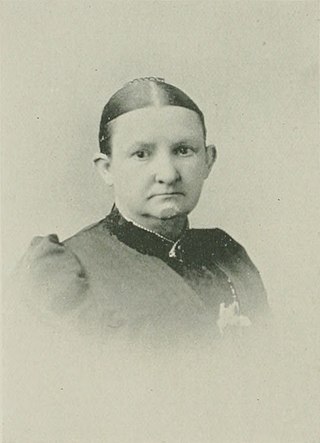
Hannah Johnston Bailey was an American Quaker teacher, activist, and advocate for peace, temperance, and women's suffrage.

Aurilla Furber was a 19th-century American author, editor, and activist from Minnesota. She is remembered as an author of poetry from the Mississippi Valley. Her poems were included in publications such as the Magazine of Poetry and Women in Sacred Song. She also contributed prose articles for the Pioneer Press and Church Work, and was a contributing editor for the Woman's Record. Furber was an officer in the Woman's Christian Temperance Union's (WCTU) local, county and district organizations. She died in 1898.

Mary Allen West was an American journalist, editor, educator, philanthropist, superintendent of schools, and temperance worker. A teacher in her early career, she served as superintendent of schools in Knox County, Illinois, being one of the first women to fill such a position in Illinois. An active supporter of the temperance movement, West served as president of the Illinois Woman's Christian Temperance Union (WCTU), and editor of the national paper, Union Signal. Her other roles within the WCTU included superintendent of the Training School for Temperance Workers, Illinois State Superintendent of Temperance in Schools of Higher Education, as well as Stockholder, Director, and Secretary of the Woman's Publication Association. She was the first president of the Illinois Woman's Press Association, a member of the Chicago Woman's Club, and director of the Protective Agency for Women and Children. West was the author of Childhood: Its Care and Culture (1887). She died in Japan, in 1892, while training temperance workers in organization and promotion reform efforts.

Caroline Brown Buell was an American activist who lectured and wrote on behalf of temperance and suffrage. She served as the assistant recording secretary (1878–80), corresponding secretary (1880–93), and a member of the Our Union publication committee (1876–83) of the National Woman's Christian Temperance Union (WCTU); as well as the president (1904) and corresponding secretary (1875–86) of the Connecticut WCTU. She also originated the plan of the Loyal Temperance Legion, the children's society of the WCTU. Buell wrote extensively for temperance publications, and other papers and magazines. She made her home in East Hampton, Connecticut.

Frances Julia Barnes was an American temperance reformer. She served as General Secretary of the Young Woman's Branch of the Woman's Christian Temperance Union (WCTU).

Eva Kinney Griffith Miller was an American journalist, temperance activist, novelist, newspaper editor, and journal publisher.

The Union Signal is a defunct American newspaper. It was the organ of the National Woman's Christian Temperance Union (N.W.C.T.U.), at one time, the largest women's organization in the United States. Established in 1874 aa The Woman's Temperance Union, it was renamed in 1877 as Our Union. When Our Union merged with another temperance paper, The Signal, in 1883, the organ's name was changed to The Union Signal. Published in Chicago, Illinois, it focused on the woman's temperance movement in the U.S. Initially, a weekly 16-page illustrated newspaper, it shifted location and publishing schedule before it ceased publication in 2016. The last edition of the N.W.C.T.U.'s quarterly journal, titled The Union Signal, was published in 2015, the main focus of which was current research and information on drugs.
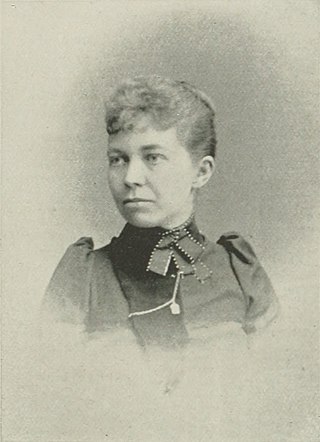
Alice Capitola Willard was an American journalist and businesswoman. She served as editor of the Times, manager of the Woman's Signal (London), and managing editor of Woman's Signal Budget (London).

Temperance Temple served as the headquarters of the National Woman's Christian Temperance Union (WCTU). It was located in Chicago, Illinois at the southwest corner of LaSalle Street and Monroe Street, in the center of city's financial district. Work was begun in July, 1890, and the building was ready for occupancy in May 1892. The lot was valued at US$1,000,000; the rentals from the building were expected to bring in an annual income of over US$200,000. The capital stock was US$600,000, one-half of which was owned by the Temple Building Association of Chicago (TBAC), and it was expected all would be secured to that association. The TBAC, a stock company with Marshall Field president of the board of trustees, owned The Temple, the third of the affiliated interests of the National WCTU. The office building was erected at a cost of US$1,200,000 on ground leased to the TBAC by Field. Temperance Temple was demolished in 1926.
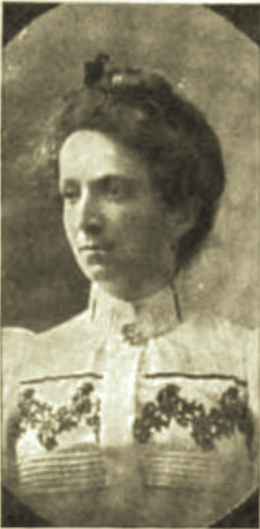
Jane Agnes Stewart was an American author, editor, and contributor to periodicals. She was a special writer for many journals on subjects related to woman's, religious, educational, sociological, and reform movements. Stewart was a suffragist and temperance activist. She traveled to London, Edinburgh, and Paris as a delegate of world's reform and religious conventions.
The Third Annual Meeting of the National Woman's Christian Temperance Union (N.W.C.T.U.) was held in Newark, New Jersey, October 25-28, 1876. Twenty-two State unions were represented at this meeting, and local unions were reported as having been formed for the first time in Tennessee, Louisiana, and Arkansas, preparatory to State organizations. No officer of the N.W.C.T.U. received a dollar for services or traveling expenses during the year. Robert's Rules of Order was adopted as the parliamentary authority for the N.W.C.T.U.
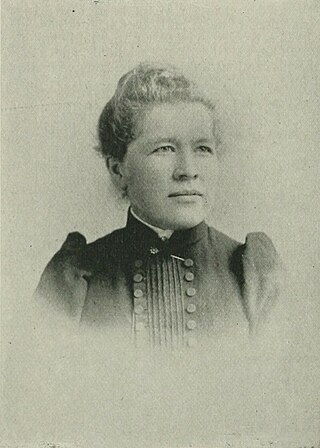
Ruby Irene Gilbert was an American business woman associated for 70 years with the white ribbon movement, particularly the Woman's Christian Temperance Union (WCTU).
References
- ↑ Frick, John W. (2003). Theatre, culture and temperance reform in nineteenth-century America. Cambridge studies in American theatre and drama. Vol. 17. Cambridge University Press. p. 161. ISBN 0-521-81778-1.
- 1 2 3 4 Avery, Rachel Foster; National Council of Women of the United States (February 22–25, 1891). Transactions of the National Council of Women of the United States. Vol. 99 of Women and the church in America (Digitized Oct 18, 2005 ed.). Washington, D.C.: J.B. Lippincott. pp. 160–165. ISBN 978-0-8370-1160-8.
- ↑ McKeever, Jane L. (1985). "The Woman's Temperance Publishing Association". The Library Quarterly: Information, Community, Policy. 55 (4): 365–397. doi:10.1086/601649. ISSN 0024-2519. JSTOR 4307894. S2CID 264652887.
- 1 2 3 Willard, Frances Elizabeth; Mary Ashton Rice Livermore (1893). A woman of the century: fourteen hundred-seventy biographical sketches accompanied by portraits of leading American women in all walks of life (Digitized Jul 7, 2007 ed.). Moulton. pp. 155.
- ↑ Gordon, Elizabeth Putnam (2005). Women Torch-Bearers: The Story of the Woman's Christian Temperance Union (2 ed.). Kessinger Publishing. p. 257. ISBN 1-4179-0490-9.[ permanent dead link ]
- ↑ Woman's Christian Temperance Union 1889, p. 134.
- ↑ Farmer, Lydia Hoyt (1893). The National exposition souvenir: What America owes to women (Digitized Jun 19, 2008 ed.). C. W. Moulton. pp. 352–353.
woman's temperance publishing association.
- ↑ One hundred years of temperance: A memorial volume of the Centennial Temperance Conference held in Philadelphia, Pa., September, 1885. National Temperance Society and Publication House. 1886. p. 267.
Attribution
 This article incorporates text from this source, which is in the public domain : Woman's Christian Temperance Union's Minutes of the National Woman's Christian Temperannce Union, at the Sixteenth Annual Meeting, Chicago, Illinois, November 8 to 13, 1889. With Address, Reports and Constitutions (1889)
This article incorporates text from this source, which is in the public domain : Woman's Christian Temperance Union's Minutes of the National Woman's Christian Temperannce Union, at the Sixteenth Annual Meeting, Chicago, Illinois, November 8 to 13, 1889. With Address, Reports and Constitutions (1889)
Bibliography
- Woman's Christian Temperance Union (1889). Minutes of the National Woman's Christian Temperannce Union, at the Sixteenth Annual Meeting, Chicago, Illinois, November 8 to 13, 1889. With Address, Reports and Constitutions. Vol. 16 (Public domain ed.). Chicago: Woman's Temperancne Publication Association.